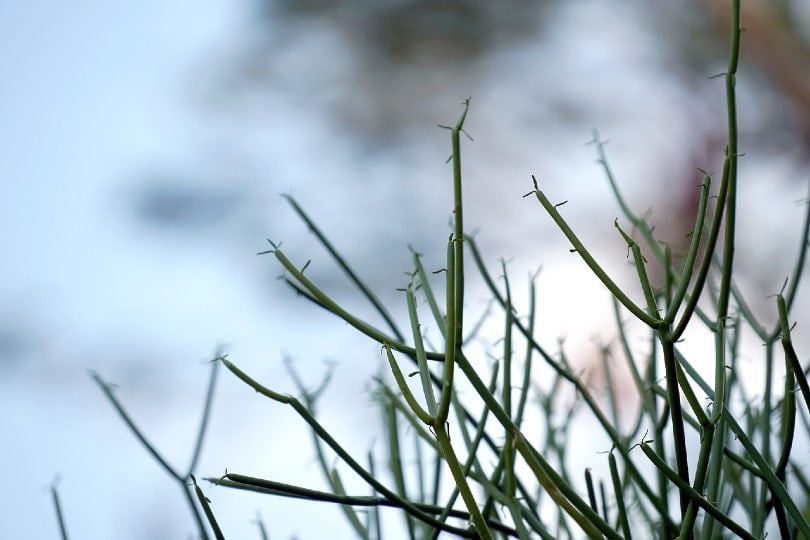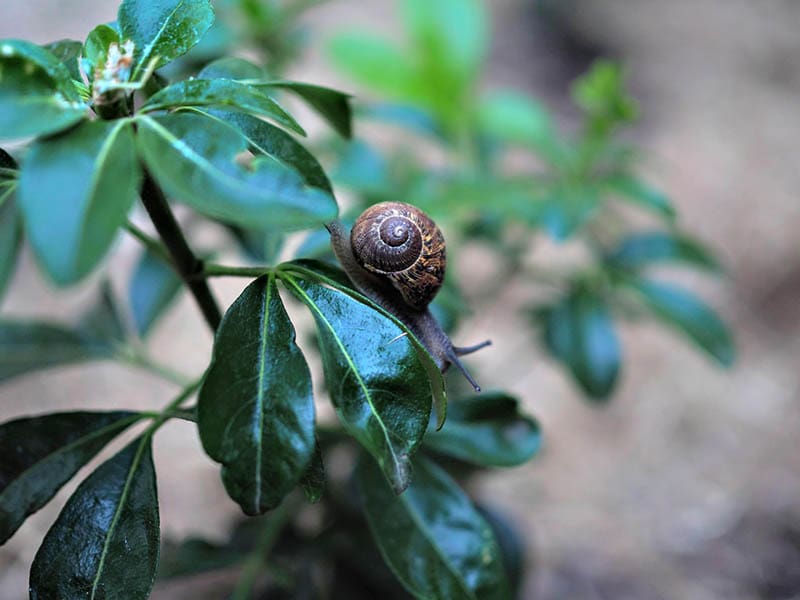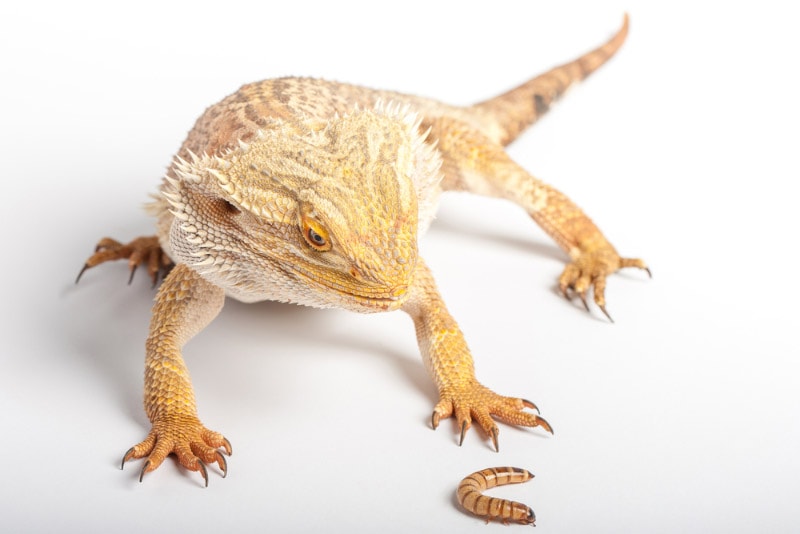Can Bearded Dragons Eat Romaine Lettuce? Vet-Approved Nutritional Science & FAQ
Updated on
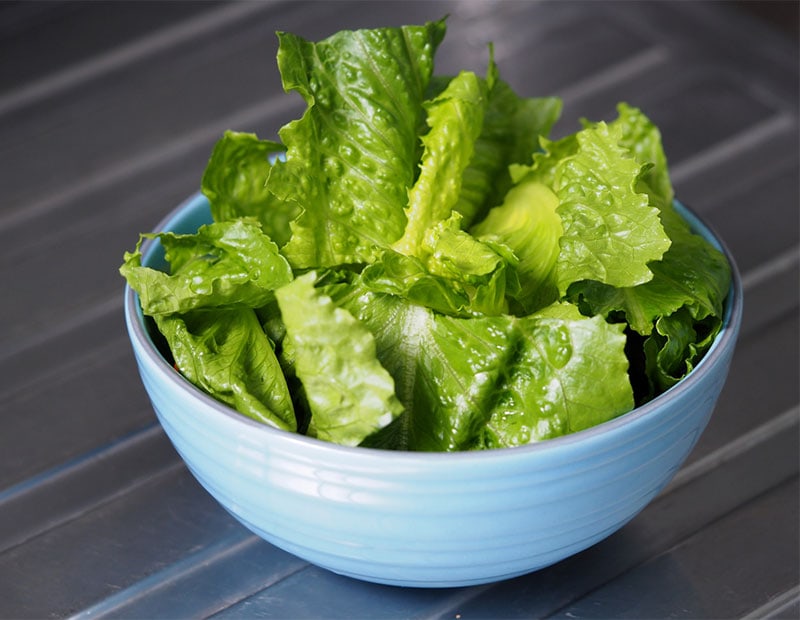
Bearded dragons, also commonly known as beardies, belong to the Pogona genus. They are small to medium in size and live around 10 to 15 years when appropriately cared for. These lizards are not short-term pets, but they have globally become one of the most popular reptiles to keep in captivity.
Many people may associate feeding lettuce, like romaine lettuce, to bearded dragons, but can they safely eat it? Does it provide any nutrition or cause any problems? Before we look into this further, yes, they can eat romaine lettuce. It is safe to do so in calculated moderation, because the overall nutritional value of lettuce is sometimes questionable.
Can Bearded Dragons Eat Romaine Lettuce?
Since bearded dragons do need a sufficient amount of greens each day, one may think lettuce is a good and economical option. Romaine lettuce is a sturdy head of dark lettuce with a chunky spine providing a crunchy refreshing bite. However, lettuce in general, unfortunately, is not the best type of green to feed your dragon as we will come to understand. With that said, romaine lettuce remains the top choice among the lettuce group to offer your pet beardie. If chopped into small pieces, it is non-toxic and contains more nutrients than any of the other lettuces.
- Water: 94.3 grams (g)
- Carbohydrates: 4.06 g
- Fat: 0.07 g
- Protein: 0.98 g
- Fiber: 1.8 g
- Calcium: 28 milligrams (mg)
- Phosphorus: 23 mg
- Beta Carotene (source of Vitamin A): 5,230 micrograms (µg)
Romaine lettuce is made up of a lot of water—a whopping 94% composition of water, in fact—and plenty of fiber. While the water content can assist with hydration, it potentially can also lead to diarrhea, especially if they over-consume this vegetable.
The good news is, unlike many of the other lettuce varieties, romaine lettuce also contains vitamins A, C, and K, as well as some calcium, folate, potassium, and magnesium. Correct levels of calcium are needed for bearded dragons to maintain their bones and skeletal system, and romaine lettuce also holds an acceptable ratio of calcium against phosphorus, making it a safer option.

Why Is Lettuce Not Good for My Bearded Dragon?
Lettuce as a vegetable in general is constructed mainly of water and fiber, offers very little in the way of nutrition, and predisposes your bearded dragon to diarrhea. It is thought this occurs due to the high water levels found in lettuce. Bearded dragons have a complex and varied diet including daily vegetables; however, lettuce alone will not give them all the nutrition they need in a day from their daily vegetable consumption. If lettuce is the only green on the menu, you run the risk of causing diarrhea, ill health, and a multitude of skeletal problems.
The main reason romaine lettuce isn’t recommended is because of its calcium-to-phosphorus ratio. For healthy adult bearded dragons in maintenance, their diet should have a calcium-to-phosphorus ratio of anywhere between 1.5:1 and 2:1, which means the calcium should be around twice as much as the phosphorus. The recommended ratio for juveniles is around 2:1, and dragons that are breeding (especially females) require a much higher calcium intake compared to adults in maintenance.
In romaine lettuce, the calcium is only slightly higher than phosphorus, typically around a ratio of 1:1. Such a ratio is undesirable for the long-term health of a bearded dragon. Phosphorus balance in the body requires that it be in the correct proportion with calcium. It binds to calcium, so when a bearded dragon is fed high amounts of phosphorus, their body responds by pulling calcium out from the bones to restore the proper levels of minerals and reduce the excess phosphorus in the bloodstream. Over time, the loss of calcium from bone mass can make the bones brittle and weak, leading to a condition called metabolic bone disease.
Also, an inappropriate ratio of calcium to phosphorus is undesirable for the long-term health of a bearded dragon because it may predispose them to kidney or parathyroid issues. Therefore, romaine lettuce should be viewed as a treat and not a significant component of their daily salad servings.
With so many other vegetables or greens available in abundance, it is far better for your bearded dragon to eat a mixture of the other more nutritious vegetables and prevent a myriad of health problems from occurring in the first place.
What Vegetables Can Bearded Dragons Eat?
Fresh produce needs to make up only around the majority of their daily diet, with the majority of that source being vegetables rather than fruit. This is only true for adults though; juveniles require much lower amounts of vegetation in their diet.
Here are a few examples of the different vegetables and fruits, not including romaine lettuce, to offer your bearded dragon. These lists are not exhaustive but give a starting point of the range available for your pet. Checking in with your veterinarian is a good idea to clarify which vegetables and fruits are best for your bearded dragon.
Ideal vegetables include:
- Broccoli
- Bell Peppers
- Bok Choy
- Dandelion
- Cilantro
- Collard Greens
- Green Beans
- Kale
- Parsley
Vegetables to offer in smaller amounts alongside the above:
- Cooked sweet potatoes
- Asparagus
- Cactus
- Carrots
- Parsnips
- Cucumber
- Watercress
Fruits (to give sparingly):
- Strawberries
- Dates
- Apricots
- Figs
- Raspberry
- Kiwi
- Apple
- Pear
- Blackberries
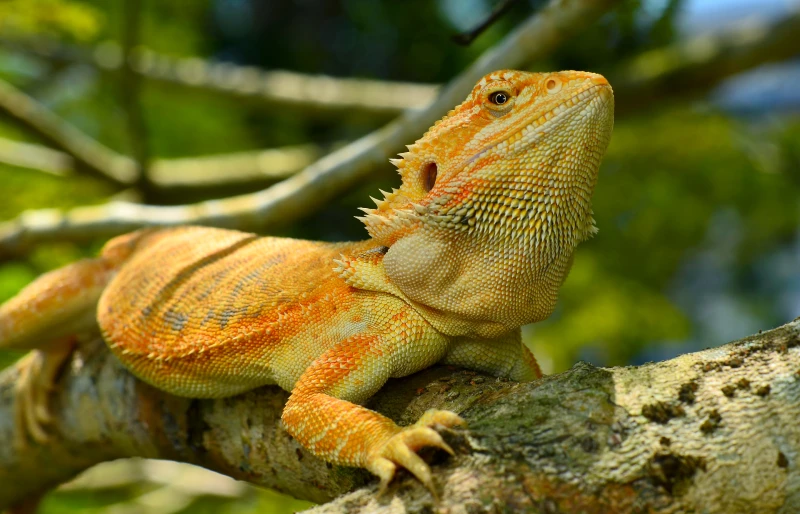
Conclusion
A bearded dragon may be an attractive idea to keep as a pet, but their lifespan, husbandry, and dietary requirements make them quite the commitment. Depending on the type, lettuce is not always a good option for your bearded dragon, especially when so many other choices are widely available offering more and better nutrition and health benefits. If one must give them a bit of the crunch cold lettuce leaves, then romaine lettuce is the best one to choose. Romaine lettuce, while still mainly water, does contain some nutrients and is not the worst vegetable to feed your pet bearded dragon, nor is it the best.
Featured Image Credit to: eakkkk, Shutterstock


